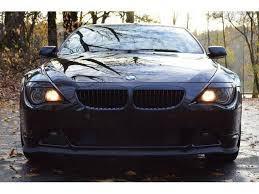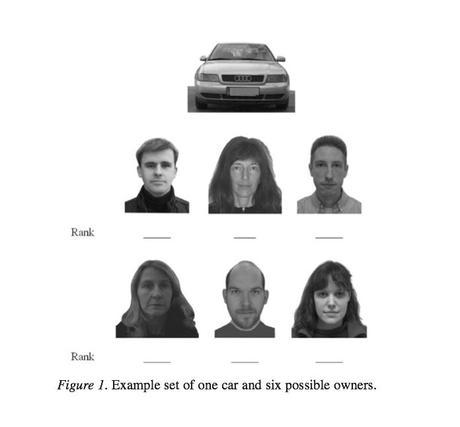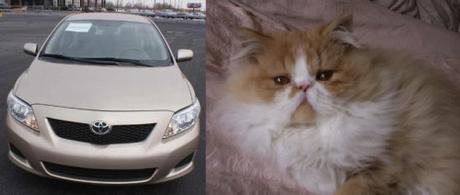Here’s something fun and silly for a Sunday . . . .
Writing for none other than the Scientific American, a serious publication, Jesse Bering claims that not only do dogs and their human owners resemble each other, so do cars and their human owners.
Bering writes:
In a recent article over at Slate, I reviewed an astonishing new set of findings from Japan showing that subjects can correctly match people to their pets when given only a paucity of physical cues. That research by Sadahiko Nakajima revealed that it’s clearly the eyes that give it away: when you cover the eyes of either the dog or the dog’s owner in the images participants choose from, their ability to match the right interspecies pair falls to chance.
Bering then says that in a study published this year in Swiss Journal of Psychology, University of Vienna psychologists Stefan Stiegar and Martin Voracek found that our faces also bear an uncanny resemblance to the front-end views of our automobiles. To top it off, our dogs’ faces bear an objective similarity to our cars’ “faces” as well.
Previous research by the anthropologist Sonja Windhager and others had shown that when we look at cars from the front, we implicitly perceive faces staring back at us. Windshields evoke foreheads, headlights remind us of eyes, side-view mirrors are stand-ins for ears, grills do the trick for noses, and the additional air intake conveys a mouth.
Moreover, Windhager found that, just as we do for human faces, we attribute different traits and personality characteristics to different models of cars due to their unique frontend designs. The VW Beetle is seen as being “happy”, for example, the Honda Civic has a “neurotic” appearance, and the BMW 645ci gives off a “dominant” and “angry” scowl.

2005 BMW 645ci
Just as human beings unknowingly tend to choose romantic partners who look like us—the principle of assortative mating—Stiegar and Voracek predicted this egocentric bias would apply to the cars that we drive as well.
In their study, Stiegar and Voracek first took black-and-white facial photographs (neutral expressions) of 30 random people, along with separate front-end images of these peoples’ cars transformed into basic grayscale. The key here is that the cars must have been personally selected by their owners, instead of given as gifts or a hand-me-down from a relative.
Next, Stiegar and Voracek developed 40 different sets of images, each set containing one car photo at the top and the faces of 6 possible owners (3 men and 3 women) below. The actual car owner was among these half-dozen photos, but randomly placed among the targets.
The 160 participants in the study, who ranged widely in age (from 16 to 78) and had an equal number of males and females, were then presented with these image sets, and asked to rank the possible owners of the given car, on a scale of 1 to 6 (most to least likely the owner).

Stiegar and Voracek suspected that the participants in their study would be able to match cars with their correct owners above chance levels. And that’s exactly what they found: The real owner was assigned rank 1 most frequently and rank 6 least frequently. This proved true regardless of the subjects’ sex and age. In other words, the study’s participants saw a physical similarity in the “faces” of cars and their owners.
Stieger and Voracek ran a second study with different participants, in which they included images of the automobile from the side and rear, in addition to the front. Again, the new group of judges (male and female volunteers aged 14 to 79 years) connected the cars with their correct owners at a level greater than chance, but only for the front-ends of the automobiles. In other words, it’s indeed the physical likeness between the owners’ faces and those of their cars that’s driving this preternatural matching skill.
Stiegar and Voracek then did a third study to see if people can match dogs to their owners’ cars by adding 36 portraits of dogs into the mix. Half of these were of purebreds, and the others were mutts. A new group of judges saw an image of a car (again, either the front, side, or rear view) and beneath that, six individual dogs. Subjects ranked each dog on the likelihood of its master being the owner of the car shown. Amazingly, the participants matched the car with the correct dog when they saw the front ends of the vehicle.
The three studies tell us that the underlying physical similarity between people and their pets—a resemblance in the face—extends to pets and their people’s cars as well. Yet the judges could only do this for the purebreds, not for the mixed breeds. To explain this discrepancy, Stiegar and Voracek speculate that although dog owners who acquire their best friends as puppies don’t know exactly what the animal will grow up to look like, the adult faces of purebreds are far more predictable than those of mutts.
In my case, my car is a 2009 gold Toyota Corolla and my cat is a gold and white Persian.

How about you?
~Éowyn

